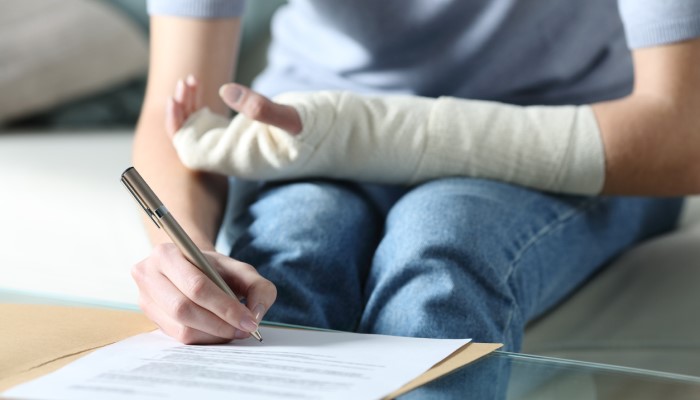You don’t have to be a legal expert to understand the concept of liability law but there are certain things that you need to know if you find yourself with a need to hire burn injury attorneys after you’ve been injured. The most important thing to understand is that liability law is not the same thing as criminal law and the defendants won’t be prosecuted in a criminal court. Any party that’s held liable is going to be found based on their actions, inactions, or actions of the people they’re responsible for.
This can make a huge difference to some people trying to decide if they want to seek a liability settlement against a company. You have to understand that you’re not going to be dragging the person who worked the machine that made your product into court. What’s going to happen is that legal representatives for the company that sold you the product will sit down with your attorney and figure out how much money they’re liable for.
What gets Covered
The specific things that the company is found liable for are going to vary widely from case to case and there’s no way to automatically know what you can expect to get. It doesn’t matter how much you’ve studied about liability law, it’s always going to come down to your specific and what your judge decides the liable party is responsible for. You can reasonably expect to have your medical bills covered and that’s a very important start.
After that, you may be entitled to lost wages from your injury, pain, suffering, lost potential, loss of livelihood, loss of joy, and many other things that you probably haven’t considered. There are also some cases where the responsible party is ordered to carry out specific tasks, like changing the way their products are manufactured.
Attorneys will Help you
If you believe that you have a liability case then you have to seek out legal counsel to help you out. They’re going to have all the information you need to figure out what you may be entitled to. They’re also used to dealing with the legal system and can make it all happen quickly.
If you try to do it all yourself, you’re not going to get what’s owed to you. This is a very important time in your life and you want the best help that you can get to get you through it.
Understanding Liability Law
Have you ever wondered how liability law works? Liability law is a complex area that deals with determining who is responsible for harm or damage caused to another party. This article will cover the basics, essential elements, legal process involved in liability law, and tips for protecting yourself from potential liability.
The Basics of Liability Law
Liability law is the legal framework that holds individuals or entities accountable for their actions when those actions cause harm to others. Its primary purpose is to compensate victims for their losses and deter wrongful conduct.
Types of Liability
There are several types of liability, and understanding them is essential for a comprehensive grasp of liability law.
Strict Liability
Strict liability is a legal concept that holds a party responsible for harm or damage, even if they did not act negligently or with malicious intent. In rigid liability cases, the focus is on the activity or product causing harm rather than the actions of the party involved.
Vicarious Liability
Vicarious liability refers to when one party is held responsible for the actions of another. This often applies to employers who may be held liable for the actions of their employees during work hours.
Negligence
Negligence is the most common type of liability. It occurs when a party fails to exercise reasonable care, leading to harm or damage to another party.
Key Elements of Liability Law
To establish liability, several key elements must be proven.
Duty of Care
First, it must be established that the defendant owed the plaintiff a duty of care. This means the defendant had a legal responsibility to act in a certain way to avoid causing harm.
Breach of Duty
Next, it must be shown that the defendant breached their duty of care. This occurs when they fail to meet the expected standard of care.
Causation
The third element is causation. This means proving that the defendant’s breach of duty directly caused the plaintiff harm or damage.
Damages
Lastly, the plaintiff must demonstrate that they suffered damages due to the defendant’s actions. Damages can include physical injuries, emotional distress, and financial losses.
Understanding the Legal Process
Understanding the legal process can help you navigate the system more effectively if you’re involved in a liability case.
Filing a Liability Claim
The first step in the legal process is filing a claim. This is when the plaintiff formally accuses the defendant of causing harm or damage.
Discovery and Investigation
After a claim is filed, both parties engage in a discovery process to gather evidence supporting their respective positions. This may involve depositions, interrogatories, and document requests.
Settlement or Trial
Many liability cases are resolved through settlement negotiations before reaching trial. If a settlement cannot be reached, the case proceeds where a judge or jury decides the outcome.
Protecting Yourself from Liability
Taking proactive steps to protect yourself from liability is essential for individuals and businesses.
Insurance and Risk Management
Having adequate insurance coverage is one way to protect yourself from liability. This can include general liability insurance, professional liability insurance, and other specialized policies. Risk management strategies can also help minimize your exposure to liability claims.
Implementing Safety Measures
Another way to reduce liability risks is by implementing safety measures in your personal or business operations. This can include maintaining a safe work environment, following industry best practices, and regularly reviewing and updating safety protocols.
Conclusion
Understanding liability law can help you navigate the legal process and protect yourself from potential claims. By being aware of the different types of liability, the critical elements involved, and the legal process, you can make informed decisions and better prepare for potential liability issues. Remember to proactively manage your risk through insurance and safety measures to protect yourself and your interests.
FAQs
What is the difference between strict liability and negligence?
Strict liability holds a party responsible for harm or damage without the need to prove negligence or malicious intent. In contrast, failure requires proving that the party failed to exercise reasonable care, leading to harm.
How can I determine if I have a valid liability claim?
Consulting with an experienced attorney is the best way to determine if you have a valid liability claim. They can assess your case and advise you on the best action.
What types of damages can be awarded in a liability case?
Damages awarded in a liability case can include compensation for physical injuries, emotional distress, lost wages, medical expenses, and property damage.
How long do I have to file a liability claim?
The time limit to file a liability claim, also known as the statute of limitations, varies depending on the jurisdiction and the type of claim. Consult an attorney to determine the applicable time limit for your specific case.
Can I still be held liable if I had no intention of causing harm?
Yes, you can still be held liable even if you had no intention of causing harm. In some cases, such as strict liability, intent is not a factor in determining responsibility.
 Car Accident Medical Bills: Understanding Insurance Coverage
Car Accident Medical Bills: Understanding Insurance Coverage  Sexual Harassment: Your Legal Rights in the Workplace
Sexual Harassment: Your Legal Rights in the Workplace  Limu Lawsuit
Limu Lawsuit  Lawsuits Against Nursing Homes
Lawsuits Against Nursing Homes  Understanding Head-On Truck Accidents
Understanding Head-On Truck Accidents  When the Shine Turns to Scratches: Car Wash Damage Lawsuits Explained
When the Shine Turns to Scratches: Car Wash Damage Lawsuits Explained  Capital Senior Living Lawsuits: Navigating the Murky Waters of Elder Care
Capital Senior Living Lawsuits: Navigating the Murky Waters of Elder Care  Capital Management Services Lawsuit: Navigating the Debt Collection Maze
Capital Management Services Lawsuit: Navigating the Debt Collection Maze 